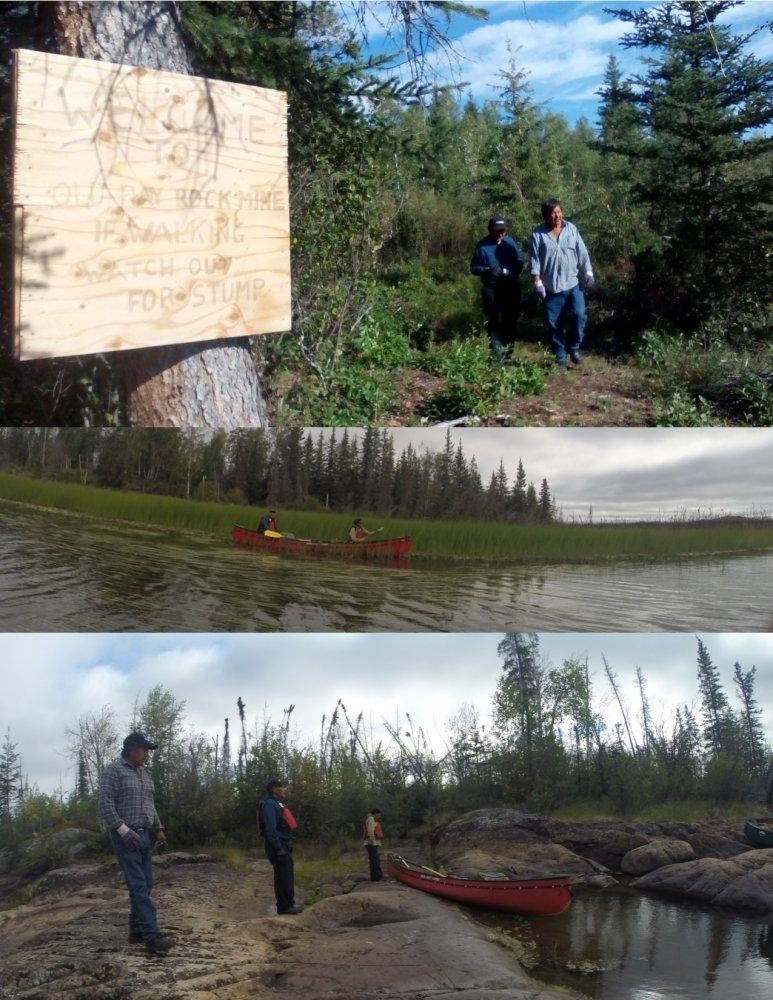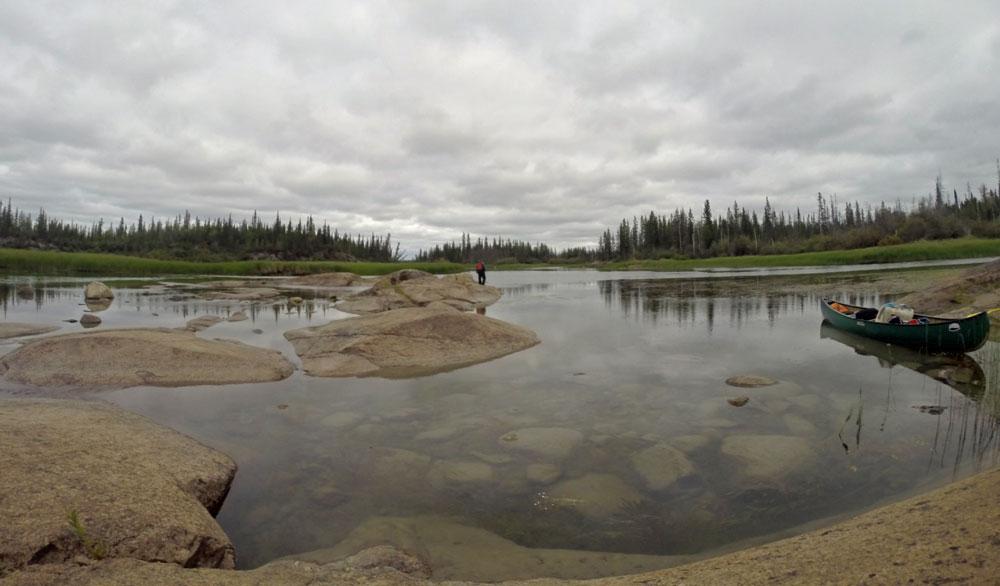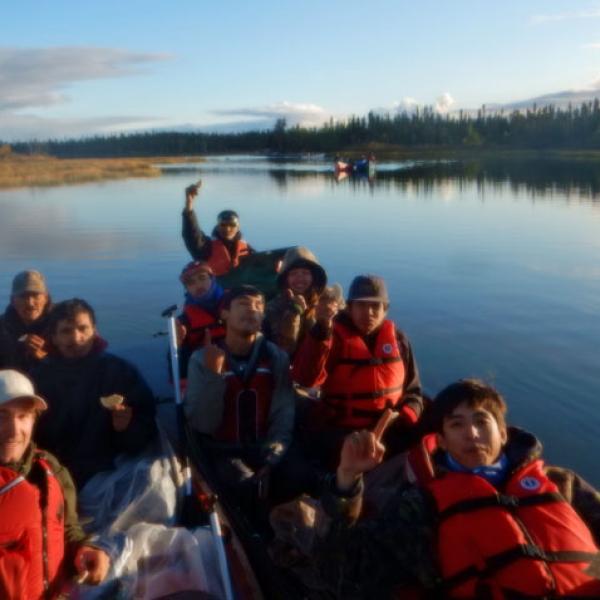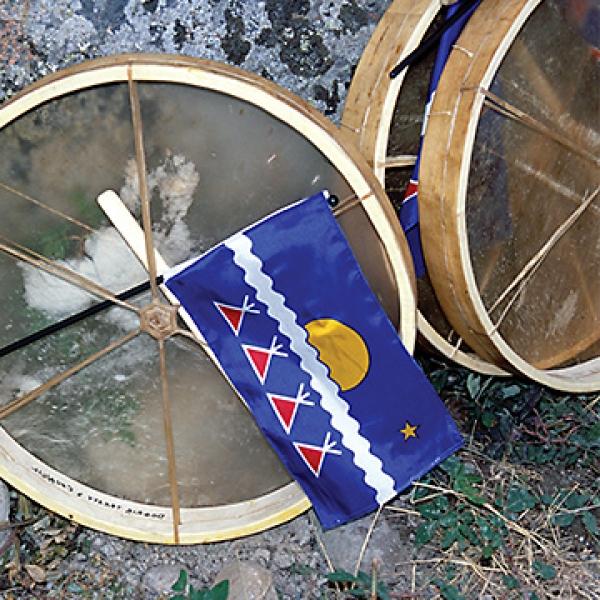The Rayrock Mine Site is a decommissioned uranium mine located in one of the ‘donut holes’ (Crown Land located within the boundaries of Tłı̨chǫ Lands). The mine was used for exploration, diamond drilling, and between 1957 and 1959, a total of 80,000 tonnes of ore were milled, creating 208 tonnes of uranium materials. About 75 km northwest of Behchokǫ̀, it can only be accessed by airplane, helicopter, dog team, skidoo or canoe.
In August, a group of seven travelled by canoe from the Rayrock Mine Site (Kwetı̨ı̨ɂaà) along the Marian River to Marian Lake. The goal of the watershed tour was to provide Tłı̨chǫ participants with a first-hand account of the condition of the watershed, downstream from Kwetı̨ı̨ɂaà, while collecting scientific samples of the ecological and environmental conditions on the tour. For four days, we collected fish and water samples for analysis of contaminants of concern. We ate delicious fish and camped at sites that the Ancestors travelled to long ago. The participants were Louis Zoe, Joe Mackenzie, Archie Black, Violet Mackenzie, Sandy Flunky and Jessica Hum. Regan Fielding, a field biologist, took samples that are now being processed. We paddled a total of 90 km and ended our trip in Behchokǫ̀ on August 14.
Our work at Kwetı̨ı̨ɂaà continues. On October 1, a group of elders will travel by floatplane to the site to perform a Blessing Ceremony. In this traditional ceremony, the elders provide advice and best wishes for relatives and friends for a safe travel in remote areas of their land and to return home safely. The focus is on the safety of all workers on remediation sites, to keep the land, water and wildlife safe from harm, and a safe return home to worker’s families. This ceremony is done in a form of a prayer and herbs (tobacco) offerings given to Mother Earth; for all life forms to return to the area and for the land & water to be restored to its natural state.
For several years, the Kwetı̨ı̨ɂaà Elders Committee (comprised of elders from Behchokǫ̀, Gamètì, Wekweètì and Whatì, with knowledge and experience of the site) have been meeting. This Committee is a forum for information exchange where Tłı̨chǫ elders and Tłı̨chǫ Government representatives from the Department of Culture and Lands Protection (DCLP) can share traditional knowledge and provide input to Aboriginal Affairs and Northern Development Canada (AANDC) – Contaminants and Remediation Directorate (CARD) who are responsible for all contaminated sites and abandoned mines in the Northwest Territories. AANDC-CARD will share findings from the site assessments, ongoing remediation and monitoring, and present back to the Kwetı̨ı̨ɂaà Elders Committee. The results of this tour, the scientific samples and the site blessing will be highlighted in a future Tłı̨chǫ Community Update.
For more information please contact:
Jessica Hum Department of Culture and Lands Protection at 867-392-6381 Ext 1356








